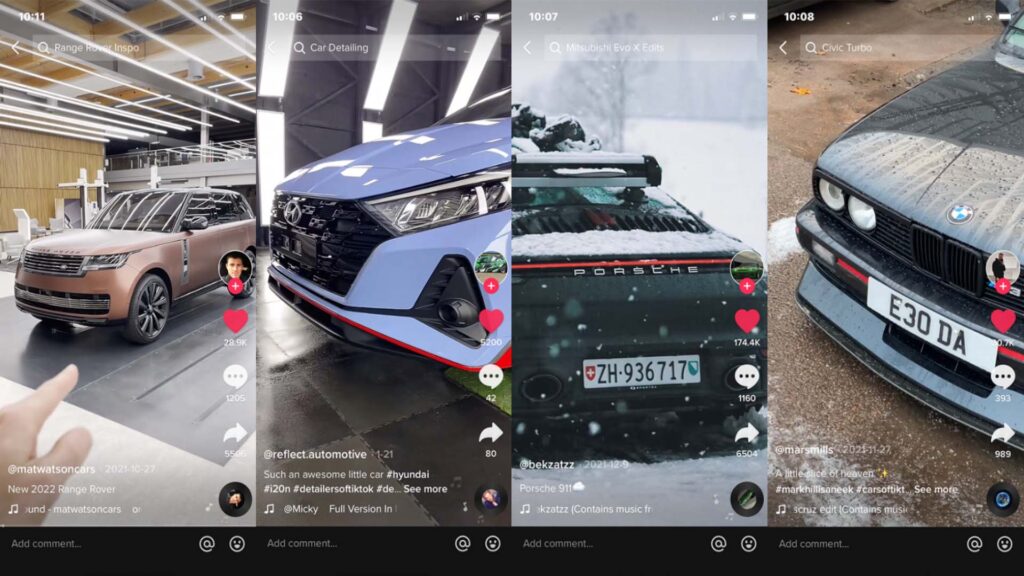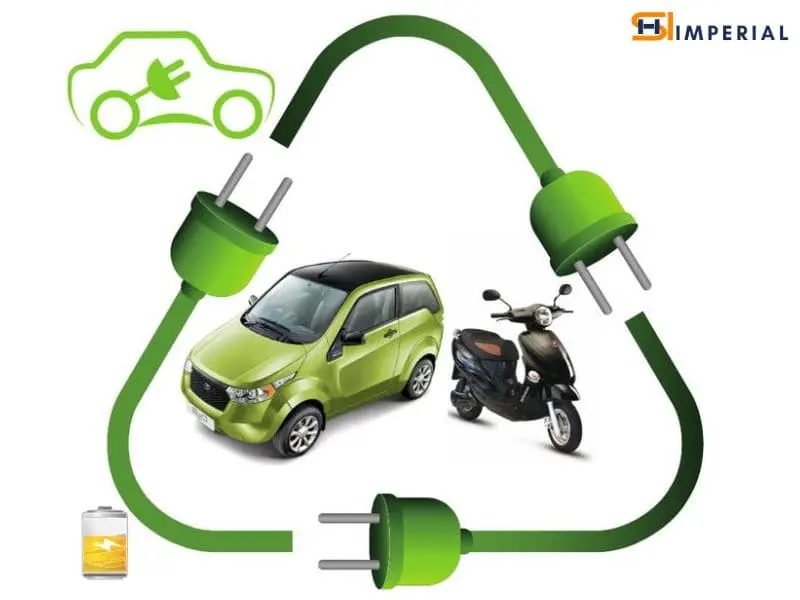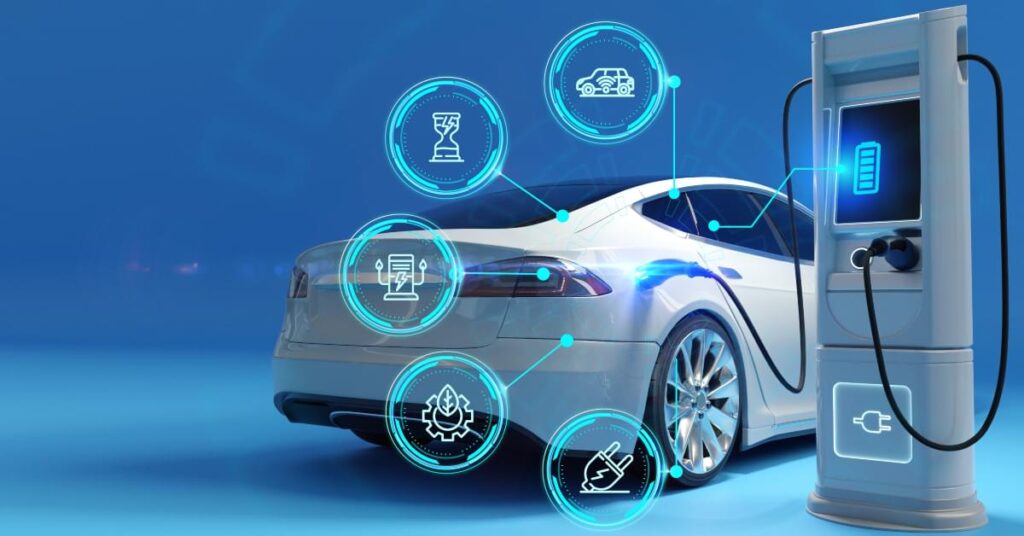Trending
Why Short-Form Content is Taking Over Social Media

In recent years, short-form content has become the dominant force in social media. From TikTok’s rapid rise to Instagram Reels and YouTube Shorts, these quick and bite-sized videos are shaping the way we consume and create content. As attention spans shrink and the demand for fast, engaging media grows, short-form content is not only capturing the hearts of users but also driving the strategies of marketers and influencers.
Why Short-Form Content is Taking Over Social Media

But what makes short-form content so powerful? And why is it taking over social media? In this blog, we’ll explore the rise of short-form content, the psychology behind its appeal, and how businesses and creators can leverage this trend to connect with audiences in a more impactful way.
The Rise of Short-Form Content
Short-form content, typically videos or posts under 60 seconds, has surged in popularity, and platforms like TikTok have played a significant role in this shift. Launched globally in 2018, TikTok quickly became a cultural phenomenon, drawing in millions of users with its easy-to-digest, creative, and often viral videos. The platform’s success was so significant that other social media giants took notice, leading to the introduction of Instagram Reels in 2020 and YouTube Shorts in 2021.
Several factors contributed to the rise of short-form content:
- Changing Consumption Habits: As the digital landscape evolved, so did the way people consumed content. The constant flow of information, combined with the increasing use of mobile devices, led to a demand for quick and easily accessible content. Users now prefer short, engaging videos they can watch on the go rather than long, drawn-out posts or videos that require more time and attention.
- The Success of TikTok: TikTok’s algorithm-driven feed of personalized content based on user preferences made it highly addictive. Its focus on short, creative, and often humorous videos resonated with a broad audience, particularly Gen Z, setting the standard for what social media content should look like in the new decade.
- Platform Adaptations: As TikTok grew, other platforms began to adapt. Instagram launched Reels to compete, and YouTube introduced Shorts to appeal to those looking for a quick video fix. Even Facebook and Twitter introduced features that encouraged shorter, more visual content. This shift across platforms indicates that short-form content isn’t just a trend; it’s becoming the new norm in social media consumption.
The Psychology Behind Short-Form Content’s Appeal
The success of short-form content can be attributed to several psychological factors that make it irresistible to users:
- Instant Gratification: We live in an age where people seek instant gratification, and short-form content delivers just that. A 30-second video can provide entertainment, information, or humor, satisfying users’ desire for quick content without requiring a significant time investment.
- Dopamine Hits: Short-form content taps into the brain’s reward system, providing a dopamine hit each time users find something funny, exciting, or interesting. The fast-paced nature of platforms like TikTok, where one video immediately leads to another, creates a loop of continuous engagement that keeps users scrolling for longer periods.
- Brevity and Clarity: In a world full of distractions, brevity is valuable. Short-form content forces creators to get to the point quickly, making the content more direct and impactful. This appeals to users who don’t have the time or patience to watch lengthy videos or read long posts.
- FOMO (Fear of Missing Out): The rapid turnover of trending content on platforms like TikTok and Instagram Reels creates a sense of urgency. Users feel compelled to check in frequently to stay up-to-date with the latest trends, memes, and viral challenges. This fear of missing out keeps them engaged and coming back for more.
- Interactivity and Creativity: Short-form content often encourages interactivity, whether through challenges, duets, or remixes. This makes users feel like active participants in the content creation process rather than passive viewers. The creative possibilities of short-form videos allow users to express themselves in unique and entertaining ways, driving further engagement.
How Businesses and Creators Can Leverage Short-Form Content
With short-form content dominating social media, it’s crucial for businesses, brands, and creators to embrace this format to stay relevant and engage with their audiences effectively. Here are some strategies for leveraging short-form content:
- Focus on Entertainment and Value: Short-form content should be entertaining, informative, or both. Brands need to find creative ways to capture attention quickly, whether through humor, storytelling, or providing valuable information. This is especially important for reaching younger audiences, who are more likely to engage with content that feels authentic and entertaining.
- Leverage Trends and Challenges: Platforms like TikTok thrive on trends and challenges, and participating in these viral movements can boost visibility. Brands and creators can capitalize on trending hashtags, challenges, or formats to create content that resonates with a wider audience and increases their chances of going viral.
- Showcase Your Brand’s Personality: Short-form content allows for a more relaxed and informal approach to branding. Businesses can use this format to showcase their personality, humanize their brand, and connect with audiences on a more personal level. Whether it’s behind-the-scenes footage, fun facts, or quick tips, short-form videos are an excellent way to show authenticity.
- Utilize User-Generated Content: Encouraging user-generated content is an effective way to engage your audience and create a sense of community. Businesses can invite customers to create short videos featuring their products or services, participate in branded challenges, or share testimonials. This not only increases brand visibility but also fosters loyalty and trust.
- Experiment with Different Formats: Short-form content doesn’t just have to be videos. Infographics, quick polls, or even short, punchy text posts can be effective depending on the platform. Experiment with different formats to see what resonates best with your audience and don’t be afraid to try new things.
- Consistency is Key: The fast-paced nature of short-form content means that consistency is crucial. Regularly posting fresh content helps keep your brand top-of-mind and ensures you stay relevant in the ever-changing social media landscape. Engaging with trends and keeping up with platform updates can also help maintain a strong presence.
The Future of Short-Form Content
As short-form content continues to dominate social media, it’s clear that this trend isn’t going anywhere. Platforms will likely continue to evolve, offering new tools and features to make short-form content even more engaging and interactive. For businesses and creators, staying ahead of the curve will require adaptability and a willingness to experiment with new formats and strategies.
In the future, we may see even shorter content formats or more immersive experiences, such as augmented reality (AR) or virtual reality (VR), integrated into short-form videos. Additionally, as algorithms become more sophisticated, personalized content recommendations will become even more precise, further driving user engagement.
Why Short-Form Content is Taking Over Social Media

Conclusion
Short-form content is taking over social media for a reason—it’s quick, engaging, and perfectly suited to our fast-paced digital world. As attention spans shrink and the demand for instant gratification grows, platforms like TikTok, Instagram Reels, and YouTube Shorts are leading the charge in reshaping how we consume and create content. For businesses and creators, embracing this trend is essential for staying relevant and connecting with audiences in more impactful ways. The rise of short-form content represents not just a shift in social media but a transformation in how we engage with the digital world.
Trending
Why Short-Form Content is Taking Over Social Media

In the ever-evolving landscape of social media, short-form content is dominating the scene, changing the way people consume, engage, and share content. From TikTok’s 15-second videos to Instagram Reels and YouTube Shorts, quick bites of content have become the go-to format for both creators and consumers. But why exactly is short-form content taking over? This blog post delves into the key reasons behind this trend and its growing influence on social media.
Why Short-Form Content is Taking Over Social Media

1. Attention Span: The Decline and Adaptation
The average human attention span has been shrinking, with studies suggesting it is now around eight seconds—shorter than that of a goldfish. With so much content vying for attention on social media, users are less likely to spend time on lengthy posts or videos. Short-form content caters to this shift by delivering information or entertainment in quick, easily digestible snippets.
This rapid consumption aligns with the fast-paced nature of modern life, where people are constantly multitasking, scrolling through feeds while commuting, or taking a short break. Platforms like TikTok, Instagram, and Twitter have mastered the art of providing instant gratification, offering an endless stream of quick videos and posts that users can consume in mere seconds. This keeps audiences engaged for longer periods as they move swiftly from one piece of content to another.
2. The Rise of Mobile Consumption
Mobile phones are now the primary device for social media usage, and short-form content is perfectly suited to this medium. With people on the go, there’s limited time to engage with long videos or text-heavy posts. Short-form content can be easily viewed in small bursts, whether someone is waiting in line, on a coffee break, or even during a quick scroll before bed.
Additionally, mobile content consumption favors vertical video formats, which align seamlessly with short-form content. TikTok popularized this format, encouraging other platforms like Instagram and YouTube to follow suit with Reels and Shorts. These vertical videos take up the full screen of a phone, immersing users in the content without requiring them to tilt their devices.
3. Virality and Shareability
Short-form content is inherently shareable. A quick, funny video or a meme that packs a punch is more likely to be shared among friends and across social networks than a long video or article. The brevity of short-form content also makes it easier for users to consume and understand the message quickly, leading to higher engagement rates.
Virality thrives on simplicity. Memorable and easy-to-digest content often has a higher chance of going viral. A catchy tune, a funny dance, or a clever joke can spread like wildfire, reaching millions of users in a short amount of time. Platforms like TikTok have built algorithms that push viral content to more users, further amplifying the reach of short-form content.
4. Creative Freedom for Creators
Short-form content has democratized content creation. You don’t need a massive production budget or advanced editing skills to create a viral video or popular post. This has opened the door for a new wave of content creators who can express themselves creatively within the constraints of short-form formats.
The time-limited nature of short-form content forces creators to be more inventive, concise, and impactful with their messaging. In just a few seconds, creators can tell stories, deliver punchlines, or convey emotions. This has led to a surge of creativity as people explore how to make the most out of the limited time and space they have. Moreover, short-form content allows for quick experimentation and iteration, letting creators try out new ideas and see what resonates with their audience without committing to lengthy production cycles.
5. Algorithmic Boosts
Social media platforms have recognized the power of short-form content and are pushing it through their algorithms. TikTok’s “For You” page is a prime example of how short-form content can be algorithmically curated to suit users’ interests, leading to higher engagement rates. Similarly, Instagram has reworked its platform to prioritize Reels, while YouTube is heavily promoting Shorts.
These algorithmic boosts ensure that short-form content is seen by a wider audience. Platforms favor content that keeps users engaged, and the quick, continuous nature of short-form videos encourages more scrolling, more time spent on the app, and ultimately, more ad revenue for the platform.
6. Adapting to Evolving Consumer Preferences
Consumers are evolving, and so are their content preferences. They want immediate entertainment, quick solutions, and fast information. Short-form content aligns perfectly with these demands. Whether it’s a 30-second product review, a quick recipe, or a funny skit, this content style meets the need for instant gratification without the investment of time that longer formats require.
Brands and businesses are catching on to this trend as well. Short-form content is not only cheaper to produce but also more likely to keep potential customers engaged. With limited time to capture attention, brands are using short-form videos and posts to create memorable, impactful messages that resonate quickly with their target audience.
Conclusion: The Future is Short
The rise of short-form content isn’t just a passing trend—it’s a reflection of changing consumer behavior and the growing importance of mobile-first, on-the-go content consumption. Social media platforms are continuing to prioritize this format, recognizing that it is what keeps users coming back for more.
Why Short-Form Content is Taking Over Social Media

As attention spans decrease and the demand for fast, digestible content rises, short-form content is set to remain at the forefront of social media. Its ability to entertain, inform, and connect users in mere seconds makes it an indispensable part of the digital landscape. For creators, brands, and social media platforms, embracing short-form content is no longer optional—it’s essential for staying relevant in the fast-paced world of social media.
Blog
The Future of Electric Vehicles: Are We Ready for the Shift”

Electric vehicles (EVs) are no longer a futuristic concept; they are rapidly becoming a reality in today’s automotive industry. With advancements in technology, increasing environmental awareness, and government policies encouraging the reduction of carbon emissions, EVs are poised to transform the transportation landscape. Major automakers are investing heavily in electric vehicle production, and more consumers are considering EVs as viable alternatives to traditional gasoline-powered cars.
The Future of Electric Vehicles: Are We Ready for the Shift”

The Growth of Electric Vehicles
The global electric vehicle market has seen remarkable growth in recent years. According to the International Energy Agency (IEA), the number of electric cars on the road reached 10 million in 2020, up from just 1 million in 2015. This exponential growth can be attributed to several factors:
- Technological Advancements: Improvements in battery technology have significantly increased the range of electric vehicles while reducing charging times. Modern EVs can now travel hundreds of miles on a single charge, addressing one of the primary concerns of early adopters—range anxiety.
- Environmental Awareness: As concerns about climate change intensify, more people are seeking eco-friendly alternatives to reduce their carbon footprints. Electric vehicles produce zero tailpipe emissions, making them a cleaner option compared to traditional internal combustion engine (ICE) vehicles.
- Government Incentives: Many governments around the world are offering financial incentives, such as tax credits and rebates, to encourage the adoption of electric vehicles. Additionally, some countries are implementing stricter emission regulations and setting ambitious goals to phase out the sale of gasoline and diesel vehicles within the next few decades.
- Automaker Commitments: Major car manufacturers, including Tesla, General Motors, Volkswagen, and Ford, have announced plans to increase their electric vehicle production and transition towards an all-electric future. These commitments are driving innovation in the industry and expanding the range of available EV models.
The Benefits of Electric Vehicles
Electric vehicles offer several advantages over traditional gasoline-powered cars, making them an attractive option for both consumers and policymakers:
- Reduced Emissions: EVs produce no tailpipe emissions, which means they contribute less to air pollution and greenhouse gas emissions. This is particularly important in urban areas, where vehicle emissions are a major source of air pollution.
- Lower Operating Costs: While the upfront cost of an electric vehicle can be higher than that of a gasoline-powered car, EVs are generally cheaper to operate. Electricity is typically less expensive than gasoline, and EVs have fewer moving parts, which means lower maintenance costs. Owners can save on fuel, oil changes, and other routine maintenance.
- Energy Efficiency: Electric vehicles are more energy-efficient than internal combustion engine vehicles. They convert a higher percentage of energy from the grid to power at the wheels, resulting in less wasted energy.
- Quiet and Smooth Ride: EVs offer a quieter and smoother driving experience due to the lack of engine noise and the instant torque provided by electric motors. This can make driving more enjoyable for many people.
- Energy Independence: Electric vehicles have the potential to reduce dependence on fossil fuels, particularly oil. As renewable energy sources like solar and wind power become more prevalent, the electricity used to charge EVs can be generated from cleaner, sustainable sources.
Challenges in the Transition to Electric Vehicles
Despite the numerous benefits, the transition to electric vehicles also presents several challenges that need to be addressed:
- Charging Infrastructure: One of the biggest hurdles to widespread EV adoption is the availability of charging infrastructure. While there has been progress in expanding charging networks, many regions still lack sufficient charging stations, particularly in rural areas. For EVs to become a mainstream choice, there needs to be a robust and accessible charging infrastructure that can support the growing number of electric vehicles on the road.
- Battery Technology and Range: Although battery technology has improved, range anxiety—fear of running out of charge before reaching a charging station—remains a concern for some potential EV buyers. Additionally, batteries are one of the most expensive components of an electric vehicle, and the cost of battery production, as well as concerns about the environmental impact of mining materials like lithium and cobalt, need to be addressed.
- Grid Capacity and Renewable Energy: As more electric vehicles hit the road, there will be increased demand for electricity. This raises concerns about whether the current power grid can handle the additional load, especially during peak charging times. To truly reap the environmental benefits of EVs, the electricity used to charge them should come from renewable sources. This means expanding renewable energy capacity and modernizing the grid to support the increased demand for clean energy.
- Affordability and Accessibility: While EV prices have been decreasing, they are still generally more expensive than traditional vehicles, especially when considering upfront costs. For widespread adoption, electric vehicles need to be affordable and accessible to a broader range of consumers. Governments and automakers must continue to work on reducing costs and providing incentives to make EVs a viable option for more people.
- Vehicle Lifespan and Recycling: Electric vehicles have different lifespans compared to traditional vehicles, primarily due to battery degradation over time. As EVs age, their batteries may lose capacity, reducing the vehicle’s range. Additionally, the disposal and recycling of EV batteries pose environmental challenges. Developing effective recycling methods and ensuring sustainable end-of-life management for EV batteries is crucial for minimizing their environmental impact.
Are We Ready for the Shift?
The transition to electric vehicles is well underway, but are we ready for the shift on a large scale? The answer is both yes and no.
Yes, we are making significant progress. The advancements in battery technology, the expansion of charging infrastructure, and the commitments from automakers and governments all indicate that the future of electric vehicles is bright. Public awareness of the environmental benefits of EVs is growing, and more consumers are willing to make the switch.
However, we are not fully ready yet. There are still challenges that need to be addressed, particularly in terms of infrastructure, affordability, and grid capacity. To ensure a successful transition to electric vehicles, continued investment in charging networks, renewable energy, and battery technology is essential. Collaboration between governments, businesses, and consumers will be key to overcoming these challenges and accelerating the shift to electric mobility.
The Future of Electric Vehicles: Are We Ready for the Shift”

Conclusion
The future of electric vehicles holds great promise for reducing carbon emissions, improving air quality, and creating a more sustainable transportation system. While there are challenges to overcome, the momentum behind electric vehicles is undeniable. With continued innovation and investment, we can pave the way for a cleaner, greener future where electric vehicles become the norm, and our transportation system is better aligned with our environmental goals. The shift to electric vehicles is happening—now it’s up to us to ensure that we are ready for it.
The Future of Electric Vehicles: Are We Ready for the Shift”
Blog
The Rise of Remote Work: How It’s Changing the Way We Live and Work

The concept of remote work, once a rarity reserved for freelancers and digital nomads, has evolved into a mainstream trend that’s redefining how we approach both our professional and personal lives. The COVID-19 pandemic accelerated this shift, forcing millions of people to adapt to working from home overnight. Now, as we move forward in a post-pandemic world, remote work is no longer seen as a temporary solution but rather a permanent fixture in the modern work environment.
The Rise of Remote Work: How It’s Changing the Way We Live and Work

The Evolution of Remote Work
Remote work isn’t an entirely new concept. Long before the pandemic, technology advancements allowed for remote jobs in fields like IT, writing, and customer support. However, it was largely seen as a niche option, with most companies still prioritizing in-office work. The pandemic forced a rapid transition to remote work across industries, as businesses scrambled to maintain operations while adhering to social distancing measures.
According to a report from Stanford University, 42% of the U.S. workforce was working remotely full-time at the height of the pandemic. This shift demonstrated that many jobs could be done effectively outside of a traditional office setting, leading companies to reconsider their long-term work arrangements. Now, even as offices reopen, a significant number of businesses are adopting hybrid models or fully remote work options.
How Remote Work is Changing the Way We Work
Remote work has fundamentally changed how we approach our jobs. Here are some key ways it’s influencing the modern workforce:
1. Increased Flexibility
One of the biggest advantages of remote work is the flexibility it offers. Employees are no longer tied to a specific location or strict 9-to-5 schedules. This newfound flexibility allows workers to structure their days around personal commitments, leading to a better work-life balance. Whether it’s picking up kids from school, attending a mid-day yoga class, or working from a different time zone, remote work provides employees with more control over their daily routines.
For employers, this flexibility can result in increased productivity and job satisfaction. Studies show that employees who work remotely often report higher levels of engagement and job satisfaction, which can lead to improved performance and reduced turnover.
2. Expanding the Talent Pool
Remote work has eliminated geographical barriers to hiring. Companies are no longer limited to recruiting talent within commuting distance of their offices. Instead, they can tap into a global talent pool, hiring the best candidates regardless of where they live. This opens up opportunities for both employers and employees, as workers can apply for jobs they previously wouldn’t have been able to due to location constraints.
Additionally, remote work can foster diversity and inclusion by providing opportunities for individuals who may have faced challenges in traditional office settings. For example, people with disabilities, caregivers, or those living in rural areas can now access jobs that might have been out of reach in the past.
3. Redefining Work-Life Balance
The line between work and personal life has blurred with the rise of remote work. On one hand, remote work allows employees to spend more time with family, pursue hobbies, and maintain a healthier work-life balance. On the other hand, it can be challenging to set boundaries when your home becomes your office.
Without a clear separation between work and personal space, many remote workers find themselves working longer hours or struggling to “switch off” at the end of the day. This has led to a greater focus on creating work-life balance through intentional practices like setting designated work hours, creating a dedicated workspace, and prioritizing self-care.
How Remote Work is Changing the Way We Live
Remote work isn’t just changing how we work—it’s also having a significant impact on how we live. Here are some ways remote work is influencing our daily lives:
1. Location Independence
The ability to work from anywhere has sparked a wave of location independence. People are no longer tied to living in expensive metropolitan areas to access job opportunities. Many remote workers are opting to move to more affordable cities, rural areas, or even different countries. This trend, often referred to as “digital nomadism,” allows individuals to design their lives around their personal preferences rather than being dictated by their job’s location.
As a result, cities and towns that were previously overlooked are now experiencing population growth as remote workers seek out lower living costs and higher quality of life. This shift is also having an impact on the housing market, with an increased demand for homes with dedicated office spaces and access to outdoor amenities.
2. Reduced Commuting and Environmental Impact
One of the most immediate benefits of remote work is the elimination of the daily commute. With fewer cars on the road and reduced public transportation use, remote work has led to a decrease in traffic congestion, air pollution, and carbon emissions. According to the Global Workplace Analytics, remote work could potentially reduce greenhouse gas emissions by 54 million metric tons annually in the U.S. alone.
This reduction in commuting time also translates into more time for personal activities. Instead of spending hours stuck in traffic, remote workers can use that time for exercise, family activities, or pursuing hobbies, contributing to a healthier and more fulfilling lifestyle.
3. Changing Social Dynamics
Remote work has also shifted social dynamics. In the office, social interactions and camaraderie with colleagues often happen naturally through face-to-face meetings, lunch breaks, and casual conversations. With remote work, these interactions have to be more intentional, leading to changes in how we build and maintain relationships with coworkers.
Virtual meetings, chat platforms, and video calls have become the new norm for communication, which can be both a blessing and a challenge. While technology allows us to stay connected, it can also create feelings of isolation and disconnection. Many remote workers miss the social aspect of office life, which has prompted some companies to invest in virtual team-building activities and periodic in-person meetups to maintain a sense of community.
Challenges of Remote Work
Despite its many benefits, remote work also presents several challenges:
- Isolation: Working remotely can lead to feelings of loneliness and isolation, especially for individuals who thrive on social interaction. It’s important for remote workers to find ways to stay connected with colleagues, friends, and family to combat these feelings.
- Communication Barriers: Remote work requires effective communication, often through digital channels. Miscommunications can happen more easily in a remote setting, leading to misunderstandings or delays in project completion. Clear communication and strong organizational skills are essential for successful remote work.
- Distractions and Productivity: Working from home comes with its own set of distractions, from household chores to family members. Staying focused and productive can be challenging without the structure of an office environment. Remote workers need to establish routines and create dedicated workspaces to minimize distractions.
The Future of Remote Work
As remote work continues to evolve, it’s clear that it’s here to stay. Many companies are embracing hybrid work models, allowing employees to split their time between working remotely and in the office. This approach offers the best of both worlds: the flexibility of remote work combined with the social and collaborative benefits of in-person work.
The Rise of Remote Work: How It’s Changing the Way We Live and Work

In the future, we can expect to see more innovations in remote work technology, better support for remote employees, and a continued focus on creating work environments that prioritize both productivity and well-being. Remote work is not just a trend—it’s a transformation in how we approach work and life, and it will continue to shape our future in profound ways.
Conclusion
The rise of remote work has brought about significant changes in how we live and work. It offers greater flexibility, access to a global talent pool, and the potential for a better work-life balance. However, it also presents challenges like isolation, communication barriers, and distractions. As we continue to navigate this new landscape, the future of work will likely be a hybrid model that combines the best aspects of both remote and in-person work, allowing us to create a more balanced and fulfilling way of living and working.
The Rise of Remote Work: How It’s Changing the Way We Live and Work
-

 Politics4 months ago
Politics4 months agoNarendra Modi’s Heartfelt Connection with Kashi and Maa Ganga
-

 Web Stories4 months ago
Web Stories4 months agoTips to Protect Your Smartphone from Getting Hacked
-

 Travel4 months ago
Travel4 months ago6 Essential Travel Tips and Hacks for the Savvy Traveler
-

 Technology4 months ago
Technology4 months ago6 Essential Tips to Protect Your Smartphone from Getting Hacked
-

 Technology10 months ago
Technology10 months agoWhatsApp Channel कैसे बनाये? | Create WhatsApp Channel
-

 Trending3 months ago
Trending3 months agoGoogle Gemini AI App Debuts in India: How It Operates on Android Devices – Comprehensive Guide
-

 Travel3 months ago
Travel3 months ago6 Hill Stations in West Bengal That Are Perfect in July
-

 Travel3 months ago
Travel3 months ago6 Budget Travel Without Visa from India: Top Destinations




Piyush@
September 10, 2024 at 11:08 am
bflnflnbbklfnb